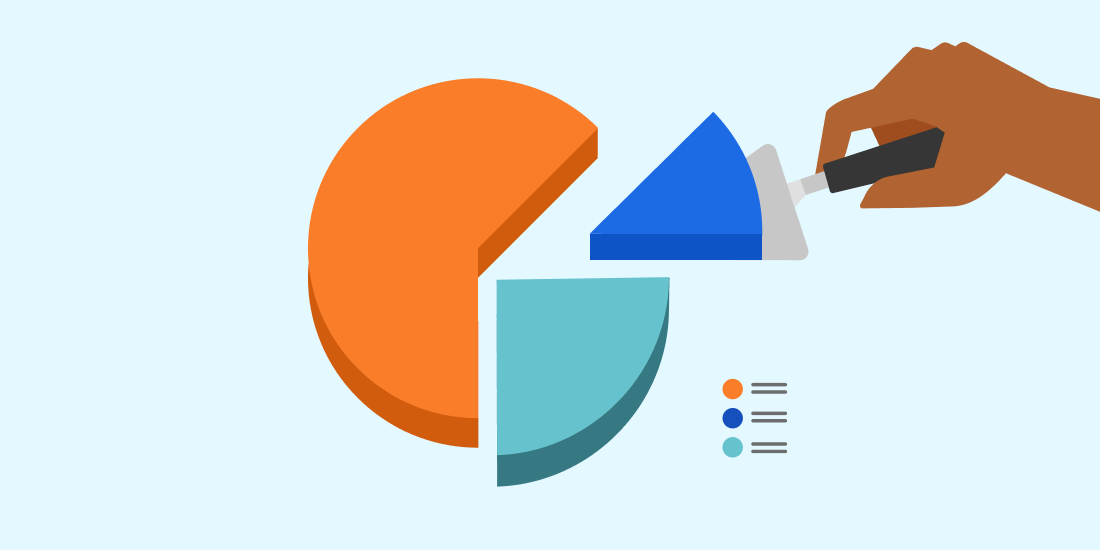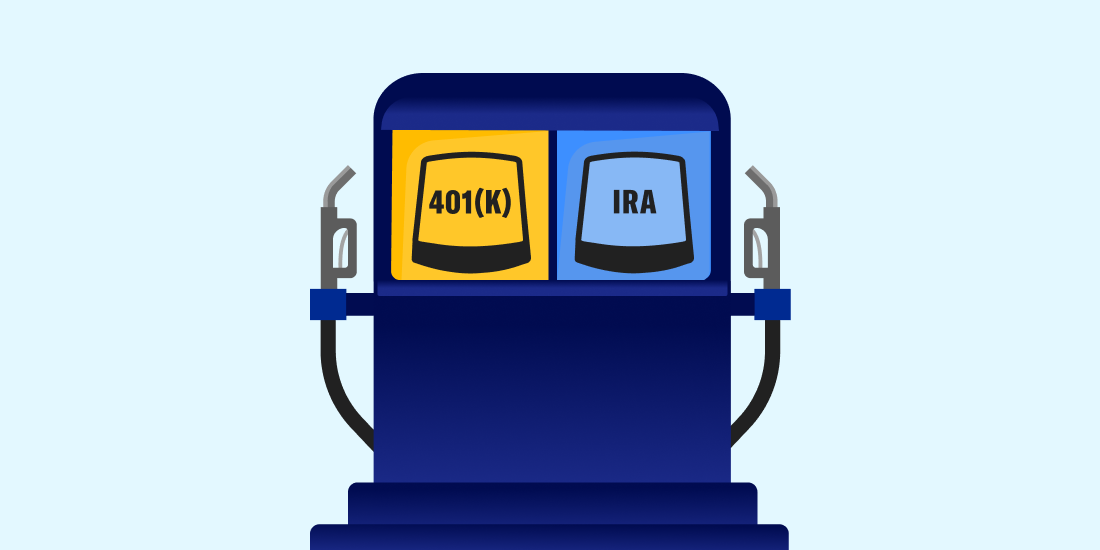Retirement Planning

Featured articles
-
![]()
How to transform your HSA into the ultimate investment vehicle
With a little planning, the triple tax advantages of a Health Savings Account can be put to ...
How to transform your HSA into the ultimate investment vehicle With a little planning, the triple tax advantages of a Health Savings Account can be put to use for retirement. Health Savings Accounts (HSAs), as the name implies, help people save for medical expenses. —and many can double as triple tax-advantaged investing accounts. Before we walk you through those tax advantages, and the "shoebox" strategy that unlocks them for retirement, here’s an important caveat upfront: You can only contribute to an HSA by meeting a few requirements, namely being enrolled in a high deductible health plan (HDHP). This type of health insurance isn’t for everyone. It comes with the potential for high out-of-pocket medical costs, so it's typically best suited for healthier individuals. But if you find an HDHP makes sense for your situation, consider opening an HSA. Then strap in for some unparalleled tax treatment. How the small-but-mighty HSA holds its own Relative to the 401(k) and IRA, an HSA has modest contribution limits of $4,150 for plans with individual coverage and $8,300 for those with family coverage. That's as of 2024. But those dollars, when invested, pack a much heavier punch. Because while 401(k)s and IRAs come with either tax-deferred contributions or tax-free withdrawals, HSAs offer both. Toss in tax-free growth, and that’s where the “triple” in triple tax-advantaged comes from. Tax-free contributions Tax-free growth Tax-free withdrawals Traditional 401(k)/IRA ✓ ✓ X Roth 401(k)/IRA X ✓ ✓ HSA ✓ ✓ ✓ Don't get us wrong; two tax perks are nothing to sneeze at. In some cases, such as when matching money is on the table, you likely should start filling up your 401(k) first. But an HSA can make for a great addition to your lineup of retirement accounts. Here's how to make it happen. Unboxing the HSA shoebox strategy Once you’re enrolled in an HDHP, you can open an HSA either through your employer or on your own before contributing to it and investing the funds. Similar to 401(k)s, an HSA is yours and stays with you after you leave your job. From there, repurposing its tax advantages for retirement boils down to three simple steps: Step 1: Save your receipts Here’s where the “shoebox” strategy gets its name. A key feature of HSAs is there’s no time limit for getting a qualified medical expense (QME) reimbursed. That’s how a surgery in your 40s can become retirement income in your 60s. Just keep your QME receipts stashed safely in a shoebox, folder, you name it. And bear in mind, any expenses you racked up before you opened an HSA aren’t eligible for reimbursement. Step 2: Do nothing Leave your HSA investments untouched and let compound growth do its thing. Consider paying for routine medical expenses with cash on hand, and building up an emergency fund as a hedge against bad luck and that high deductible you signed up for. Step 3: Come retirement, cash in Years or even decades down the road, when the time comes to start tapping into your HSA for retirement income, simply start cashing in those QME receipts. As we mentioned earlier, there's no time limit for getting reimbursed, so you can wait as long as you want or need before making tax-free withdrawals. You can technically use your HSA penalty-free for anything, no receipts required, after you turn 65. But crucially, those non-QME withdrawals count as taxable income, negating one of your HSA’s three precious tax advantages. See all your retirement accounts—HSA included—side-by-side If or when the time comes for you to set up an HSA, you’ll be ready to make the most of it for retirement. And by connecting your external HSA account to Betterment, you can see it side-by-side with all the other accounts in your retirement goal. It may not add much to your overall balance in the beginning, but with time—and triple the tax advantages—that may change soon enough. -
![]()
How To Plan For Retirement
It depends on the lifestyle you want, the investment accounts available, and the income you ...
How To Plan For Retirement It depends on the lifestyle you want, the investment accounts available, and the income you expect to receive. Most people want to retire some day. But retirement planning looks a little different for everyone. There’s more than one way to get there. And some people want to live more extravagantly—or frugally—than others. Your retirement plan should be based on the life you want to live and the financial options you have available. And the sooner you sort out the details, the better. Even if retirement seems far away, working out the details now will set you up to retire when and how you want to. In this guide, we’ll cover: How much you should save for retirement Choosing retirement accounts Supplemental income to consider Self-employed retirement options How much should you save for retirement? How much you need to save ultimately depends on what you want retirement to look like. Some people see themselves traveling the world when they retire. Or living closer to their families. Maybe there’s a hobby you’ve wished you could spend more time and money on. Perhaps for you, retirement looks like the life you have now—just without the job. For many people, that’s a good place to start. Take the amount you spend right now and ask yourself: do you want to spend more or less than that each year of retirement? How long do you want your money to last? Answering these questions will give you a target amount you’ll need to reach and help you think about managing your income in retirement. Don’t forget to think about where you’ll want to live, too. Cost of living varies widely, and it has a big effect on how long your money will last. Move somewhere with a lower cost of living, and you need less to retire. Want to live it up in New York City, Seattle, or San Francisco? Plan to save significantly more. And finally: when do you want to retire? This will give you a target date to save it by (in investing, that’s called a time horizon). It’ll also inform how much you need to retire. Retiring early reduces your time horizon, and increases the number of expected years you need to save for. Choosing retirement accounts Once you know how much you need to save, it’s time to think about where that money will go. Earning interest and taking advantage of tax benefits can help you reach your goal faster, and that’s why choosing the right investment accounts is a key part of retirement planning. While there are many kinds of investment accounts in general, people usually use five main types to save for retirement: Traditional 401(k) Roth 401(k) Traditional IRA (Individual Retirement Account) Roth IRA (Individual Retirement Account) Traditional 401(k) A Traditional 401(k) is an employer-sponsored retirement plan. These have two valuable advantages: Your employer may match a percentage of your contributions Your contributions are tax deductible You can only invest in a 401(k) if your employer offers one. If they do, and they match a percentage of your contributions, this is almost always an account you’ll want to take advantage of. The contribution match is free money. You don’t want to leave that on the table. And since your contributions are tax deductible, you’ll pay less income tax while you’re saving for retirement. Roth 401(k) A Roth 401(k) works just like a Traditional one, but with one key difference: the tax advantages come later. You make contributions, your employer (sometimes) matches a percentage of them, and you pay taxes like normal. But when you withdraw your funds during retirement, you don’t pay taxes. This means any interest you earned on your account is tax-free. With both Roth and Traditional 401(k)s, you can contribute a maximum of $23,000 in 2024, or $30,500 if you’re age 50 or over. Traditional IRA (Individual Retirement Account) As with a 401(k), an IRA gives you tax advantages. Depending on your income, contributions may lower your pre-tax income, so you pay less income tax leading up to retirement. The biggest difference? Your employer doesn’t match your contributions. The annual contribution limits are also significantly lower: just $7,000 for 2024, or $8,000 if you’re age 50 or over. Roth IRA (Individual Retirement Account) A Roth IRA works similarly, but as with a Roth 401(k), the tax benefits come when you retire. Your contributions still count toward your taxable income right now, but when you withdraw in retirement, all your interest is tax-free. So, should you use a Roth or Traditional account? One option is to use both Traditional and Roth accounts for tax diversification during retirement. Another strategy is to compare your current tax bracket to your expected tax bracket during retirement, and try to optimize around that. Also keep in mind that your income may fluctuate throughout your career. So you may choose to do Roth now, but after a significant promotion you might switch to Traditional. Health Savings Account (HSA) An HSA is another solid choice. Contributions to an HSA are tax deductible, and if you use the funds on medical expenses, your distributions are tax-free. After age 65, you can withdraw your funds just like a traditional 401(k) or IRA, even for non-medical expenses. You can only contribute to a Health Savings Accounts if you’re enrolled in a high-deductible health plan (HDHP). In 2024, you can contribute up to $4,150 to an HSA if your HDHP covers only you, and up to $8,300 if your HDHP covers your family. What other income can you expect? Put enough into a retirement account, and your distributions will likely cover your expenses during retirement. But if you can count on other sources of income, you may not need to save as much. For many people, a common source of income during retirement is social security. As long as you or your spouse have made enough social security contributions throughout your career, you should receive social security benefits. Retire a little early, and you’ll still get some benefits (but it may be less). This can amount to thousands of dollars per month. You can estimate the benefits you’ll receive using the Social Security Administration’s Retirement Estimator. Retirement accounts for the self-employed Self-employed people have a few additional options to consider. One Participant 401(k) Plan or Solo 401(k) A Solo 401(k) is similar to a regular 401(k). However, with a Solo 401(k), you’re both the employer and the employee. You can combine the employee contribution limit and the employer contribution limit. As long as you don’t have any employees and you’re your own company, this is a pretty solid option. However, a Solo 401(k) typically requires more advance planning and ongoing paperwork than other account types. If your circumstances change, you may be able to roll over your Solo 401(k) plan or consolidate your IRAs into a more appropriate retirement savings account. Simplified Employee Pension (SEP IRA) With a SEP IRA, the business sets up an IRA for each employee. Only the employer can contribute, and the contribution rate must be the same for each qualifying employee. Savings Incentive Match Plan for Employees (SIMPLE IRA) A SIMPLE IRA is ideal for small business owners who have 100 employees or less. Both the employer and the employee can contribute. You can also contribute to a Traditional IRA or Roth IRA—although how much you can contribute depends on how much you’ve put into other retirement accounts. -
![]()
How to manage your income in retirement
An income strategy during retirement can help make your portfolio last longer, while also ...
How to manage your income in retirement An income strategy during retirement can help make your portfolio last longer, while also easing potential tax burdens. Retirement planning doesn’t end when you retire. To have the retirement you’ve been dreaming of, you need to ensure your savings will last. And how much you withdraw each month isn’t all that matters. In this guide we’ll cover: Why changes in the market affect you differently in retirement How to help keep bad timing from ruining your retirement How to decide which accounts to withdraw from first How Betterment helps take the guesswork out of your retirement income Part of retirement planning involves thinking about your retirement budget. But whether you’re already retired or you’re simply thinking ahead, it’s also important to think about how you’ll manage your income in retirement. Retirement is a huge milestone. And reaching it changes how you have to think about taxes, your investments, and your income. For starters, changes in the market can seriously affect how long your money lasts. Why changes in the market affect you differently in retirement Stock markets can swing up or down at any time. They’re volatile. When you’re saving for a distant retirement, you usually don’t have to worry as much about temporary dips. But during retirement, market volatility can have a dramatic effect on your savings. An investment account is a collection of individual assets. When you make a withdrawal from your retirement account, you’re selling off assets to equal the amount you want to withdraw. So say the market is going through a temporary dip. Since you’re retired, you have to continue making withdrawals in order to maintain your income. During the dip, your investment assets may have less value, so you have to sell more of them to equal the same amount of money. When the market goes back up, you have fewer assets that benefit from the rebound. The opposite is true, too. When the market is up, you don’t have to sell as many of your assets to maintain your income. There will always be good years and bad years in the market. How your withdrawals line up with the market’s volatility is called the “sequence of returns.” Unfortunately, you can’t control it. In many ways, it’s the luck of the withdrawal. Still, there are ways to help decrease the potential impact of a bad sequence of returns. How to keep bad timing from ruining your retirement The last thing you want is to retire and then lose your savings to market volatility. So you’ll want to take some steps to try and protect your retirement from a bad sequence of returns. Adjust your level of risk As you near or enter retirement, it’s likely time to start cranking down your stock-to-bond allocation. Invest too heavily in stocks, and your retirement savings could tank right when you need them. Betterment generally recommends turning down your ratio to about 56% stocks in early retirement, then gradually decreasing to about 30% toward the end of retirement. Rebalance your portfolio During retirement, the two most common cash flows in/out of your investment accounts will likely be dividends you earn and withdrawals you make. If you’re strategic, you can use these cash flows as opportunities to rebalance your portfolio. For example, if stocks are down at the moment, you likely want to withdraw from your bonds instead. This can help prevent you from selling stocks at a loss. Alternatively, if stocks are rallying, you may want to reinvest your dividends into bonds (instead of cashing them out) in order to bring your portfolio back into balance with your preferred ratio of stocks to bonds. Keep an emergency fund Even in retirement, it’s important to have an emergency fund. If you keep a separate account in your portfolio with enough money to cover three to six months of expenses, you can likely cushion—or ride out altogether—the blow of a bad sequence of returns. Supplement your income Hopefully, you’ll have enough retirement savings to produce a steady income from withdrawals. But it’s nice to have other income sources, too, to minimize your reliance on investment withdrawals in the first place. Social Security might be enough—although a pandemic or other disaster can deplete these funds faster than expected. Maybe you have a pension you can withdraw from, too. Or a part-time job. Or rental properties. Along with the other precautions above, these additional income sources can help counter bad returns early in retirement. While you can’t control your sequence of returns, you can control the order you withdraw from your accounts. And that’s important, too. How to decide which accounts to withdraw from first In retirement, taxes are usually one of your biggest expenses. They’re right up there with healthcare costs. When it comes to your retirement savings, there are three “tax pools” your accounts can fall under: Taxable accounts: individual accounts, joint accounts, and trusts. Tax-deferred accounts: individual retirement accounts (IRAs), 401(k)s, 403(b)s, and Thrift Savings Plans Tax-free accounts: Roth IRAs, Roth 401(k)s Each of these account types (taxable, tax-deferred, and tax-free) are taxed differently—and that’s important to understand when you start making withdrawals. When you have funds in all three tax pools, this is known as “tax diversification.” This strategy can create some unique opportunities for managing your retirement income. For example, when you withdraw from your taxable accounts, you only pay taxes on the capital gains, not the full amount you withdraw. With a tax-deferred account like a Traditional 401(k), you usually pay taxes on the full amount you withdraw, so with each withdrawal, taxes take more away from your portfolio’s future earning potential. Since you don’t have to pay taxes on withdrawals from your tax-free accounts, it’s typically best to save these for last. You want as much tax-free money as possible, right? So, while we’re not a tax advisor, and none of this information should be considered advice for your specific situation, the ideal withdrawal order generally-speaking is: Taxable accounts Tax-deferred accounts Tax-free accounts But there are a few exceptions. Incorporating minimum distributions Once you reach a certain age, you must generally begin taking required minimum distributions (RMDs) from your tax-deferred accounts. Failure to do so results in a steep penalty on the amount you were supposed to take. This changes things—but only slightly. At this point, you may want to consider following a new order: Withdraw your RMDs. If you still need more, then pull from taxable accounts. When there’s nothing left in those, start withdrawing from your tax-deferred accounts. Pull money from tax-free accounts. Smoothing out bumps in your tax bracket In retirement, you’ll likely have multiple sources of non-investment income, coming from Social Security, defined benefit pensions, rental income, part-time work, and/or RMDs. Since these income streams vary from year to year, your tax bracket may fluctuate throughout retirement. With a little extra planning, you can sometimes use these fluctuations to your advantage. For years where you’re in a lower bracket than usual–say, if you’re retiring before you plan on claiming Social Security benefits–it may make sense to fill these low brackets with withdrawals from tax-deferred accounts before touching your taxable accounts, and possibly consider Roth conversions. For years where you’re in a higher tax bracket, like if you sell a home and end up with large capital gains–it may make sense to pull from tax-free accounts first to minimize the effect of higher tax rates. Remember, higher taxes mean larger withdrawals and less money staying invested.
Considering a major transfer? Get one-on-one help with one of our experts. Explore our licensed concierge
All Retirement Planning articles
-
![]()
Should you fill up your 401(k) first, or your IRA?
Should you fill up your 401(k) first, or your IRA? Oct 24, 2024 11:30:19 AM Navigating one of retirement saving’s first forks in the road Can you have both a 401(k) and an IRA? Yes! But having access to both accounts begs the question: Which one is more deserving of your retirement dollars? The answer, as it so often does in personal finance, depends on your situation. So let’s explore when a 401(k)-first mentality makes sense, and when it doesn't, before closing things out with a wildcard third option that might warrant both your attention and your savings. A quick refresher on retirement accounts For the sake of this conversation, we're focusing on the two most common retirement accounts: the IRA and the 401(k), including the non-profit/public equivalent 403(b) account. Both come with built-in tax advantages, annual contribution limits, and eligibility criteria: 401(k) Accessible to: Anyone whose employer offers one 2024 contribution limit: $23,000 (for those under 50) IRA Accessible to: Anyone whose Modified Adjusted Gross Income (MAGI) falls below the IRS's eligibility limits (see table below) qualifies for tax benefits. 2024 contribution limit: $7,000 (for those under 50) 2024 IRA income limits Traditional IRA* Modified Adjusted Gross Income (MAGI) Roth IRA Modified Adjusted Gross Income (MAGI) Full tax deduction $0-$77,000 (single) Full contribution $0-$145,999 (single) $0-$123,000 (married) $0-$229,999 (married) Partial tax deduction $77,001-$86,999 (single) Partial contribution $146,000-$160,999 (single) $123,001-$142,999 (married) $230,000-$239,999 (married) No tax deduction** $87,000 and up (single) No contribution $161,000 and up (single) $143,000 and up (married) $240,000 and up (married) *If covered by a retirement plan at work **Anyone is eligible to make taxable contributions to a traditional IRA Source: IRS Power ranking your retirement accounts In general, there are a few reasons why you might default to the 401(k), including but not limited to: You can contribute by way of payroll deductions and ease the sting of saving. Many employers offer matching contributions, aka free money. And you can contribute significantly more money to them than IRAs. Altogether, that's a lot of pros working in the 401(k)’s favor. But not all 401(k)s are created equal. Some providers charge more for limited investment options. According to the 24th edition of the 401k Averages Book, the average investment expense for some smaller plans1 was 1.12%. By comparison, you can invest with a Betterment IRA for an all-in fee well south of 1%—and receive a 1% matching contribution to boot. So ask your employer or 401(k) provider for help sizing up your total costs. Or take a look at your 401(k) statement for code names like: Management fees Asset-based fees Operating expenses Expense ratios If you find your 401(k) costs are significantly steeper than an IRA, consider the following order of operations: Fill up your 401(k) up to your employer’s match, assuming they offer one. Max out your IRA, assuming you’re eligible. Come back to your 401(k). On the other hand, if your 401(k)’s fees are competitive, congratulations! Things just got simpler. Consider maxing it out first before turning your attention to an IRA, or that wildcard option we mentioned earlier. A quick aside on the Health Savings Account (HSA) Sure, the name says "health," but HSAs can be repurposed for retirement savings as well. They come with a $4,150 contribution limit for individuals, and they’re available to anyone enrolled in a high-deductible health plan (HDHP). They’re also triple tax-advantaged, meaning money is tax-free going in, tax-free while it grows, and tax-free coming out, assuming it’s used for qualified expenses. That’s one more tax perk than 401(k)s and IRAs, which make you choose between either tax-deferred contributions or tax-free withdrawals. Tax-free contributions Tax-free growth Tax-free withdrawals Traditional 401(k)/IRA ✓ ✓ X Roth 401(k)/IRA X ✓ ✓ HSA ✓ ✓ ✓ So if an HDHP is right for your healthcare needs, consider prioritizing an HSA before an IRA. Between those two accounts and the 401(k), that's more than $30,000 worth of annual investing potential. Fill up those tanks, and you’ll be well on your way to retiring. Now just enjoy the ride. -
![]()
Why saving for your retirement isn’t a solo climb
Why saving for your retirement isn’t a solo climb Sep 24, 2024 11:11:26 AM And the summit is smaller than you think Figuring out how much you need to retire can feel like an exercise in futility, primarily because of two reasons: It’s a moving target. Our needs and, by extension, our spending changes as we age. It’s a Very Big Number. And Very Big Numbers can seem so far out of reach. So let’s simplify things for a second. We’ll share a way to quickly crunch your retirement savings number, how to make it seem less scary, then demonstrate how we do things in the Betterment app. Revising the 25x rule This popular shorthand says to multiply your annual expenses in retirement by 25 to land on your number. It’s the inverse of the 4% rule, another quick calculation for how much of your investments you can sustainably spend each year. They're both ballpark numbers, and if you’re in the early or even middle stages of your financial journey, they can be helpful. But the 25x rule has a hitch, and it’s the challenge of knowing exactly how much we’ll spend in retirement. Luckily for us, we can approximate these shifts by looking at our fellow Americans’ average spending levels by age. When we do that, we see that our spending tends to peak in middle age and declines as we approach the traditional retirement age of 65. In short, you’ll likely spend less in retirement than you do now. And that’s good news! It means you probably need less than you think to retire. So take your current spending—that’s pre-tax income, minus taxes, minus retirement saving—and adjust depending on when you want to retire before multiplying by 25. That’s your age-adjusted retirement savings number, roughly speaking. Now let’s make it seem less like Mount Everest. Because we’ll let you in on a little secret: (You don’t need to save the entire amount) As an example, we’ll make your Very Big Number a Nice Round Number, too. Say you need roughly $2,000,000 for retirement. Using the 4% rule, that’s $80,000 of spending each year. Seeing that many zeros in a savings goal can be demoralizing. But what if we said you weren’t on the hook for all of it? That a generous friend was more than willing to help. And not only help, but shoulder the majority of the load. They just work slowly, so you’ll need to be patient. Your friend, as you may have guessed, is compound growth. And you may be shocked by their share of your retirement savings. Assuming you reach your goal in 30 years, saving $2,500 a month and earning a 5% inflation-adjusted annual return, here’s how much you would have directly saved, compared with how much your “pal” chipped in. You read that right. In this scenario, compound growth is responsible for more than half of your retirement saving. Sticking with our Mount Everest metaphor, that’s like a sherpa giving you a piggy-back ride not long after leaving base camp. Now, don’t get us wrong—$900k is not nothing. But it certainly sounds more doable than $2 million, doesn’t it? And that $2,500 saved a month? That just so happens to be 2024’s combined maximum contribution for a 401(k) and IRA. Either way, it’s best to not dwell on a Very Big Number for too long. Back-of-the-napkin exercises such as these serve a purpose, to a point. So our retirement planning advice, along with adding way more nuance to your calculations, encourages you to focus simply on your desired annual spending in retirement. We help you chart a course to get there and automate your approach, all so you can forget about finances for a second. Because compound growth grows the fastest when you’re not looking. -
![]()
How to talk money with your aging parents
How to talk money with your aging parents Jul 9, 2024 11:43:32 AM Talking about their financial future isn’t easy, but it’s important Talking money with your parents is no one’s idea of a good time. But as you enter middle age, and they enter their Golden years, it’s important to create an open dialogue. Because one day, you could be pressed into duty helping them manage their finances, or even stepping in with financial support yourself. Pew Research Center polled adults with an aging (65+) parent and found it’s more common than you might think. So before you buy another bouquet of flowers, or another tacky tie, consider gifting your parents an awkward but meaningful conversation on money’s role in aging with grace. Here's how. Step into their shoes, then switch mindsets If you think it's hard having this “talk” with your parents, imagine how they must feel. Maybe they're afraid their money won't last. Maybe they're too embarrassed to ask for help. From anyone, let alone someone whose diaper they once changed (and changed, and changed). This sort of empathy sets the stage for a true heart-to-heart. Sure, you could share any number of practical tips—everything from catch-up contributions and safe withdrawal strategies to (quick plug) how awesome Betterment is and how easy it is to switch—but those conversations are best left for another day. What matters most in these first few exchanges is to build trust, and to come at things through the lens of curiosity, not problem-solving. To that end, we leave you with a few suggestions. Three ways to set the table, and three icebreaker ideas Depending on your relationship with your parents, there may be no way around this: It will be awkward. Your inquiries may be met with resistance. So start getting comfortable with both possibilities. A few tips can help your odds: Pick a boring time. Steer clear of hectic holidays. Start small. Spread things out over multiple conversations. Stay curious. The questions matter more than the answers. Now, once it’s time to actually start the conversation, consider a few icebreakers: The “23andMe” angle. “I’m curious, how did your parents handle their finances as they aged? Did you ever talk about it with them?” The “I’ll go first” angle. “With the kids getting older, I’ve been thinking more and more about estate planning lately. But it’s all so overwhelming.” The CNBC angle. “Did you see the Dow just dropped [insert number] points? I know it’s easy to overreact, but it stings seeing my portfolio shrink even just a little.” Regardless of where things go from here, remember to give yourself credit. You just took the hardest step (the first one) in joining your parents on their financial journey. And if there ever does come a day when they consider joining you at Betterment, our team is here to help.
Looking for a specific topic?
- 401(k)s
- 529s
- Asset types
- Automation
- Benchmarks
- Bonds
- Budgeting
- Compound growth
- Diversification
- Donating shares
- ETFs
- Education savings
- Emergency funds
- Financial advisors
- Financial goals
- Getting started investing
- Health Savings Accounts
- Home ownership
- IRAs
- Interest rates
- Investing accounts
- Market volatility
- Performance
- Portfolios
- Retirement income
- Retirement planning
- Risk
- Rollovers and transfers
- Roth accounts
- Stocks
- Tax Coordination
- Tax loss harvesting
- Taxable accounts
- Taxes
No results found






